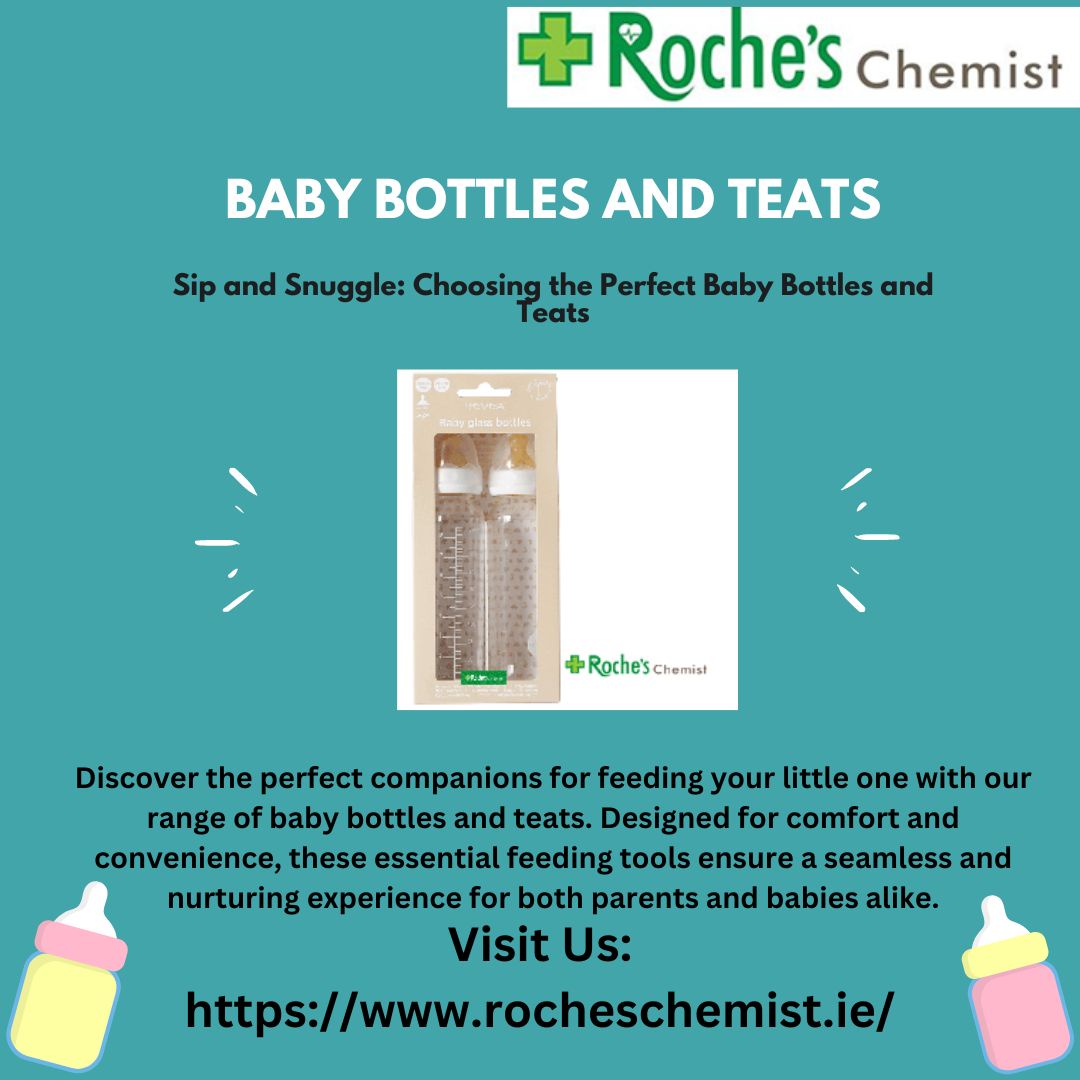Introduction:
Welcoming a new life into the world is a joyous occasion, and as parents, providing the best care for your precious bundle of joy becomes a top priority. Essential to the early stages of infant care is the selection of the right baby bottles and teats, pivotal tools that play a crucial role in ensuring your baby's nourishment and comfort. In this comprehensive guide, we will delve into the intricacies of baby bottles and teats, exploring their types, materials, features, and offering valuable tips for making informed choices that align with your baby's needs.
Understanding the Importance of Baby Bottles and Teats:
Baby bottles and teats, commonly known as nipples, are indispensable for parents who choose to bottle-feed their infants. These components not only serve as vessels for delivering formula or breast milk but also play a significant role in providing a comforting and familiar experience for the baby, closely mimicking the natural breastfeeding process. Choosing the right combination of bottles and teats ensures a seamless transition for both baby and parent, fostering a positive feeding experience.
Types of Baby Bottles:
Standard Bottles:
Standard bottles, often made of durable plastic or glass, are the most common choice for parents. They come in various sizes, shapes, and designs, providing a straightforward option for feeding infants.
Wide-Neck Bottles:
Wide-neck bottles have a broader opening, making them easier to clean and fill. These bottles are designed to mimic the natural breast shape, facilitating a smoother transition between breastfeeding and bottle-feeding.
Anti-Colic Bottles:
Many bottles now come with anti-colic features, including venting systems that reduce the intake of air during feeding. This helps minimize the risk of gas, spit-up, and discomfort for the baby.
Disposable Bottles:
Disposable baby bottles, often used for convenience during travel, are pre-sterilized and ready for use. They eliminate the need for cleaning but may not be as environmentally friendly as reusable options.
Breastmilk Storage Bottles:
For breastfeeding mothers, bottles designed for storing expressed breast milk are essential. These bottles are compatible with breast pumps and can be used for both storage and feeding.
Types of Teats (Nipples):
Orthodontic Teats:
Orthodontic teats are designed to support proper oral development by imitating the natural shape of a mother's nipple. They encourage correct tongue placement and jaw movement, reducing the risk of orthodontic issues.
Traditional Teats:
Traditional teats come in various shapes, typically resembling a dome or a cone. While they don't necessarily mimic the natural breast shape, they are well-accepted by many babies.
Variable Flow Teats:
Variable flow teats allow parents to adjust the flow rate according to the baby's age and feeding stage. This feature ensures that the baby receives an appropriate amount of milk at each developmental milestone.
Materials Used in Baby Bottles and Teats:
Plastic:
Plastic bottles are lightweight and durable, often made of BPA-free materials to ensure the baby's safety. However, some parents prefer other materials to avoid any potential chemical leaching.
Glass:
Glass bottles are an eco-friendly option that doesn't leach any chemicals. They are sturdy but heavier than plastic, making them less practical for travel.
Silicone:
Silicone is a popular material for teats due to its softness and flexibility. It is free from harmful chemicals and provides a natural feel for the baby.
Latex:
Latex teats are soft and flexible, closely resembling the texture of a mother's nipple. However, some babies may be allergic to latex, and these teats may wear out faster than silicone ones.
Choosing the Right Combination:
When selecting baby bottles and teats, it's essential to consider the individual needs and preferences of both the baby and parents. Factors such as breastfeeding habits, the baby's age, and any specific concerns, like colic or reflux, should guide your decision-making process. Experimenting with a few options and observing your baby's response can help identify the most suitable combination.
Tips for Effective Bottle-Feeding:
Hold the Bottle Properly:
Hold the bottle at a slight angle, ensuring that the teat is always filled with milk. This minimizes the intake of air and reduces the risk of colic.
Monitor Feeding Pace:
Pay attention to your baby's feeding pace and allow them to suck and swallow comfortably. Avoid rushing the feeding process, as this may lead to overfeeding or discomfort.
Clean and Sterilize Regularly:
Regularly clean and sterilize bottles, teats, and any additional components to maintain a hygienic feeding environment. This helps prevent the risk of infections and ensures the baby's well-being.
Check Teat Flow:
As your baby grows, monitor the teat flow and switch to a faster flow rate if needed. This adjustment ensures that your baby receives an appropriate amount of milk as per their developmental stage.
Responsive Feeding:
Pay attention to your baby's cues and adopt a responsive feeding approach. This involves feeding when the baby shows signs of hunger and stopping when they signal fullness.
Conclusion:
Choosing the right baby bottles and teats is a crucial aspect of infant care, influencing the baby's feeding experience and overall well-being. By understanding the various types, materials, and features available, parents can make informed decisions that cater to their baby's specific needs. Whether breastfeeding or bottle-feeding, the goal is to create a nurturing environment that fosters a positive and comfortable feeding experience for both the baby and parents.
A Comprehensive Guide to Baby Bottles and Teats: Nurturing Your Little One's Journey

6 min read
29 January
In case you have found a mistake in the text, please send a message to the author by selecting the mistake and pressing Ctrl-Enter.

No comments yet